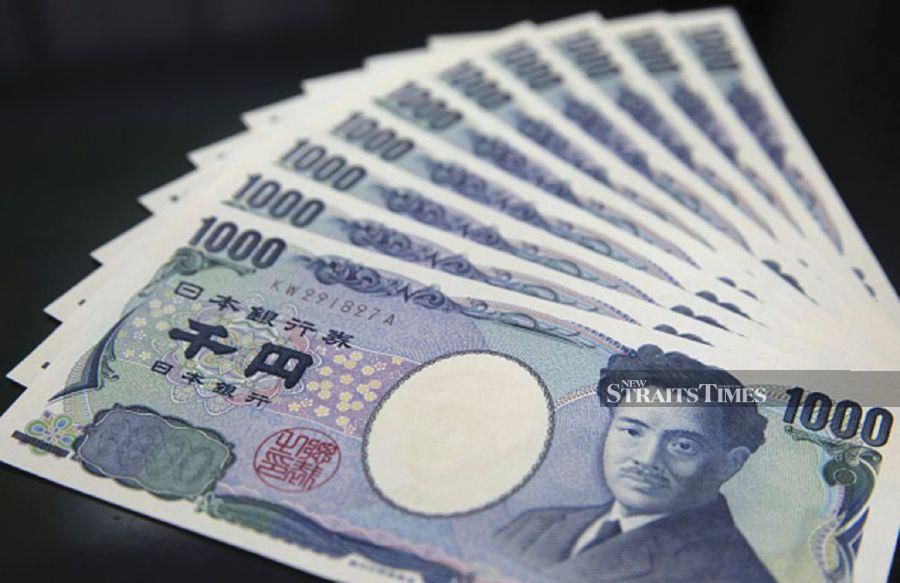EARLIER this month, the Finance Ministry announced that the government had successfully priced 200 billion yen (RM7.3 billion) worth of Samurai bonds at a coupon rate of 0.53 per cent. These bonds will be fully guaranteed by the state-owned Japan Bank for International Cooperation (JBIC) at an extra cost of 0.1 per cent, and are expected to be officially issued before March of next year.
But what does this all mean? And what exactly is a Samurai bond?
Despite its interesting name, Samurai bonds are not as exotic as they sound. A “normal” Malaysian government bond is issued locally and denominated in ringgit.
In contrast, if the Malaysian government decides to issue bonds in Tokyo, these bonds are then termed “Samurai” bonds, which is a name given to all yen-denominated bonds issued by a foreign entity in Tokyo.
This is nothing new or unusual. Malaysia’s planned Samurai bond issuance follows an increasing trend in Samurai bond issued by various Asean countries of late. Indonesia has been issuing Samurai bonds with increasing frequency over the last decade, most recently in May 2018, when it completed a 100 billion yen issue. Meanwhile, in August last year, the Philippines issued 154 billion yen in Samurai bonds, its first in over eight years. Indeed, the Malaysian government itself is no Samurai bond virgin — it too, used to be a regular Samurai issuer in the 1970-1980s.
But why would a government choose to issue yen-denominated bonds in Tokyo over regular local currency bonds? Well, it is an effort to capitalise on the persistently low interest rate environment in Japan.
The Japanese central bank recently decided to keep its key policy interest rate steady at -0.1 per cent, where it has stood since 2016.
Furthermore, JBIC has been exceptionally generous in granting guarantees to countries wishing to issue bonds in Japan.
As mentioned, JBIC guaranteed the entire Malaysian Samurai bond issuance, and both Indonesia and the Philippines have previously enjoyed similar guarantees. These factors, in addition to Japan’s large pool of domestic liquidity, allow foreign governments to borrow more cheaply by issuing their bonds in Tokyo.
For example, Malaysian 10-year bond yields averaged about 3.9 per cent over the past year, while the planned Malaysian 10-year Samurai bonds were priced at one of the lowest coupon rates in all of Asean at 0.53 per cent. Similarly, the 10-year Indonesian Samurai bonds were issued with a coupon rate of 1.27 per cent, even as Indonesian 10-year yields regularly hover around 7.8 per cent.
So, if it is indeed cheaper for governments to issue Samurai bonds, why don’t we just issue all Malaysian government bonds in Japan?
For one, the JBIC bond guarantee is not limitless. After a long period of issuing multiple Samurai bonds with full guarantees from JBIC, Indonesia had to issue its first unguaranteed Samurai bonds in 2015.
Similarly, if Malaysia continued to issue vast amounts of foreign yen bonds, Japan will eventually have to reduce its guarantee. This would undoubtedly result in a higher-than-0.53 per cent coupon rate as Malaysia’s foreign currency debt holdings rise.
Relatedly, having higher amounts of foreign currency debt (in yen) carries with it a new set of risks.
Currently, more than 97 per cent of Malaysian federal government debt is denominated in ringgit, while 75 per cent of it is held by Malaysian residents. Increasingly choosing to issue government bonds outside of Malaysia in foreign currency will raise Malaysia’s exposure to higher foreign currency risks and increase the probability of sudden reversals in capital flows.
After all, issuing yen-denominated debt means that the interest and principal repayments will have to be paid in yen — a factor that may significantly increase government debt service costs if the yen suddenly appreciates against the ringgit.
Of course, the current planned Samurai bond amount is still relatively small.
This 200 billion yen amount only accounts for about one per cent of Malaysian government debt. Additionally, risks of a sudden reversal are partially mitigated by the fact that the Malaysia Samurai bonds were sold via private placement mainly to Japanese institutional investors and state banks, reducing the likelihood of short-term speculative activity.
Research by economists Amstad, Packer and Shek has also suggested that the risk gap between local currency and foreign currency bonds has been narrowing amid lower global volatility and a surge in global reserves.
Altogether, the available evidence indicates that Malaysia could indeed benefit by issuing yen-denominated bonds, as long as this amount remains within reason.
But if, and as these foreign currency borrowings get larger, these risks will start to grow and may eventually outstrip the benefits of issuing Samurai. As such, any shift towards significantly higher foreign currency borrowing will have to be appropriately justified by the ministry. In any case, if recent statements are any indicator, this may not be Malaysia’s Last Samurai.
This article first appeared in The New Straits Times on 24 March 2019





